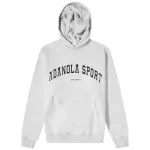
When we talk about good design, most people think about aesthetics—color palettes, layout, typography, and interactive features. But the true measure of great UX/UI design lies in how well it serves everyone, including people with disabilities.
Accessibility in digital design isn’t just a “nice to have.” It’s a business essential.
From legal compliance to increased market reach, creating accessible experiences can open doors—not just for users, but for your brand’s reputation, reach, and bottom line. Let’s explore why accessibility matters in UX/UI design and how integrating it from the start can set your business apart.
What Is Accessibility in UX/UI Design?
Accessibility means designing digital experiences—like websites, apps, and software—that can be used by people of all abilities. This includes users with:
-
Visual impairments (e.g., blindness, low vision, color blindness)
-
Hearing impairments
-
Cognitive or learning disabilities
-
Motor limitations
-
Temporary impairments (e.g., a broken arm or eye strain)
An accessible UX/UI design ensures that all users can navigate, interact with, and benefit from your digital products, regardless of their physical or cognitive conditions.
Why Accessibility Is a Business Essential
You might be thinking, “Why should my business focus on accessibility?” Here’s why:
1. It Expands Your Audience
Over 1 billion people worldwide live with some form of disability. Inaccessible websites or apps automatically exclude a significant portion of your potential users or customers.
Inclusive design means broader reach. When your digital platforms work for everyone, more people can engage with your brand, and that directly impacts sales, sign-ups, and overall growth.
2. It Improves SEO
Search engines, like Google, prioritize accessible websites. Features such as proper alt text, clear heading structures, and readable content aren’t just good for users with disabilities—they’re also good for search bots.
By integrating accessibility into your UX/UI design, you improve your site’s overall SEO, increasing visibility and driving more organic traffic.
3. It Enhances Usability for All
Here’s the secret: what helps one user often helps many. Designing for accessibility leads to cleaner, more intuitive interfaces, which benefit all users, not just those with disabilities.
For example:
-
Captions help not only people who are deaf but also users in noisy environments.
-
High contrast improves visibility for low-vision users and people viewing screens in bright light.
-
Keyboard navigation helps users with mobility impairments and power users who prefer shortcuts.
Accessible UX/UI design leads to a better user experience for everyone.
4. It Builds Brand Reputation and Loyalty
Today’s users care about values. They want to support businesses that are inclusive, ethical, and socially responsible.
By prioritizing accessibility, you send a clear message: your brand cares about all customers. That kind of respect and empathy builds trust, and trust builds loyalty.
The Business Risks of Ignoring Accessibility
While the benefits of accessibility are compelling, the risks of ignoring it can be serious:
-
Legal consequences: Accessibility lawsuits are on the rise. Many countries—including the U.S., Canada, and members of the EU—require websites to meet certain accessibility standards (like WCAG).
-
Lost revenue: If users can’t access your site or app, they’ll take their business elsewhere—likely to a competitor who’s doing it better.
-
Brand damage: Inaccessible design can be seen as exclusionary. It only takes one bad headline or social media post to cause reputational harm.
Investing in accessible UX/UI design now can help you avoid much costlier problems later.
How to Integrate Accessibility Into UX/UI Design
Accessibility isn’t something to “tack on” at the end of a project. It needs to be part of your process from the very beginning. Here are key ways to start integrating it effectively:
1. Start with User Research
Understanding the needs of people with disabilities is essential. When conducting user research, include participants with diverse abilities and needs. Their feedback helps shape designs that are inclusive from the ground up.
2. Use Semantic HTML and ARIA Roles
When building web products, use proper semantic tags—like <header>, <nav>, <main>, and <footer>—to give screen readers the right context. ARIA (Accessible Rich Internet Applications) roles help improve navigation and labeling for assistive technologies.
3. Design with Color Contrast and Readability in Mind
Low contrast can make content hard to read. Stick to WCAG guidelines (a contrast ratio of at least 4.5:1 for normal text) and avoid relying solely on color to convey meaning.
4. Enable Keyboard Navigation
Ensure all interactive elements—like buttons, links, and forms—can be accessed via keyboard. This is critical for users who can’t use a mouse.
5. Include Alt Text for Images
Always describe images using alt text so that screen reader users can understand visual content. Make the descriptions clear, concise, and meaningful.
6. Test With Real Users and Tools
Use accessibility tools like:
-
Screen readers (NVDA, VoiceOver)
-
Color contrast checkers
-
WAVE or Lighthouse audit tools
And most importantly: test with users who have disabilities. Real feedback beats automated tools every time.
Common Accessibility Pitfalls in UX/UI Design
Avoid these frequent mistakes that make your product less accessible:
-
Using placeholder text instead of labels in forms
-
Relying only on icons without text (e.g., a trash can without a “delete” label)
-
Not providing keyboard focus styles
-
Making clickable areas too small on mobile
-
Using auto-playing media without controls
By keeping these in check, your design becomes instantly more usable and inclusive.
Accessibility as Part of the Design Culture
Integrating accessibility isn’t just a task—it’s a mindset. It’s about putting people first, designing with empathy, and making inclusion part of your brand identity.
Encourage your team to adopt accessibility as a core value. Train your developers, designers, content creators, and product managers on accessible best practices. Build it into your workflow—from wireframing to prototyping to launch.
The best UX/UI design is human-centered. And human-centered design must be inclusive by nature.
Final Thoughts
Accessibility isn’t about meeting minimum legal standards—it’s about doing what’s right. It’s about making sure everyone has equal access to your products, services, and experiences.
When you embed accessibility into your UX/UI design process, you unlock better usability, greater reach, improved SEO, and a stronger, more inclusive brand.
So, the next time you design a new feature or update your website, ask yourself:
Is this experience accessible for all?
If not, it’s time to make it right.
Because in today’s world, accessibility isn’t an add-on—it’s a business essential.




